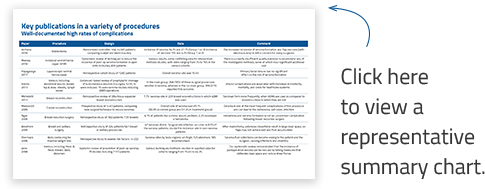

Whether seroma serves as a nidus for infection…or is simply a marker of poor wound healing and occult infection, we and others have observed a correlation between seroma and subsequent complications.
Jordan, et al, Plastic and Reconstructive Surgery, 2016
Seroma … occurs at rates ranging from 3% to 85% after breast or axillary surgery. Seromas can interfere with healing, require prolonged treatment, cause patient discomfort, and delay adjuvant treatment.
Boomstra, et al, Journal of the American College of Surgeons, 2009
Local complications such as seroma and infection are reported in 15‑40% of patients [abdominoplasty].
Abesamis, et al, Plastic and Reconstructive Surgery Global Open, 2019
Wound complications are associated with increases in morbidity, mortality, and costs for healthcare systems.
Kosins, et al, Plastic and Reconstructive Surgery, 2013
Seroma fluid collections…can becoming vexing to the patient and the surgeon, causing infections and disability. Seroma may lengthen recovery time, time off of work, also can promote scar tissue formation, require further procedures for treatment.
Shermak et al, Plastic and Reconstructive Surgery, 2008









